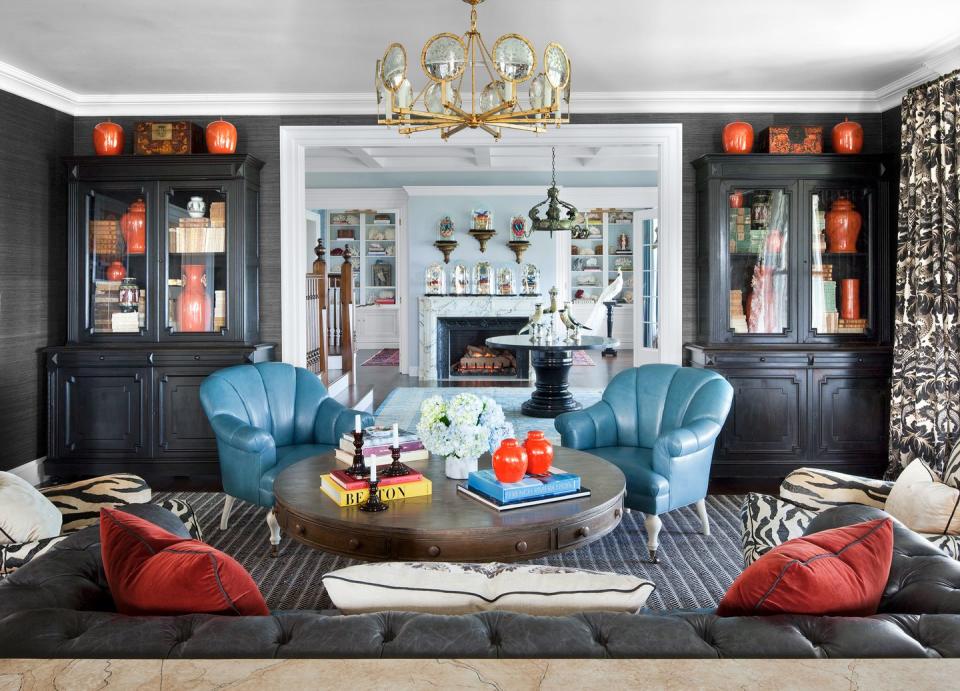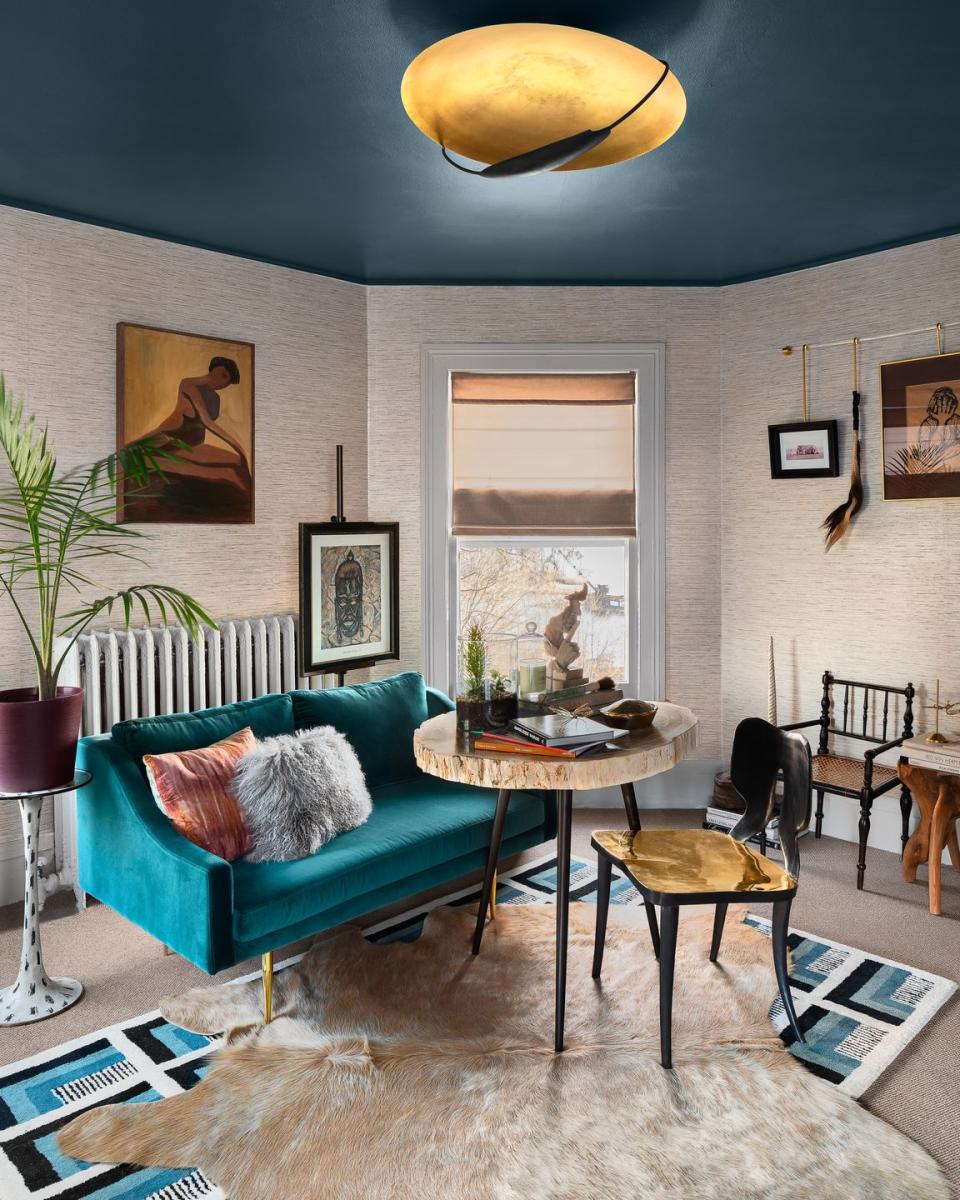How Your Interior Designer Will Charge You for Their Services (and What It Means)

"Hearst Magazines and Yahoo may earn commission or revenue on some items through the links below."
Most people (probably) wouldn’t fix their own deeply troubled toilet or perform a DIY root canal, because we recognize hiring a professional is well worth it. So why do many people still balk at the idea of bringing in a professional to design their homes? The answer may be that there’s often a major lack of clarity when it comes to what designers charge, so you can feel like you’re authorizing a major splurge before even being able to glance at the price tag. The truth is, when it comes to interior design, there's no one way of calculating the bill—some designers charge hourly, some a flat fee, some a markup on items they purchase for you (often using special, trade-only discounts). That said, there are several factors that come into play—considerations that can help you better understand just what hiring a professional might entail.
But first, the reason for such disparity: Many designers are self-taught, and even ones with a formal education don't often receive the kind of business guidance that accompanies other professions. “Don't even get me started about how [the business of design] is literally THE most important part of your business and that design schools barely touch on this at all,” says Hermosa Beach, California-based designer Kate Lester. “When I started my company my first priority was drafting a solid contract and making sure that our fee structure was aligned with what I felt our services were worth, and also aligned with what our local competition was charging. We bill hourly for all design time and it's in increments of 15 minutes. A text is 15 minutes!”
Hourly Rates
Charging hourly was a sanity-saving move on Lester’s part, because it cut back on never-ending email and text chains, plus those out-of-control meetings that can derail an afternoon, if not an entire day. It also allows the project to proceed as smoothly and efficiently as possible for everyone involved.
D.C. designer Annie Elliott also charges hourly, in part because “it's impossible to tell at the start of a project how decisive a client will be, and if they ask to see round after round of options, a fixed fee is a disaster.” By charging hourly, she eliminates that headache. “We provide our clients with an estimate after we determine the scope of work, but we remind them that the more decisive they are, the lower our fees will be,” Elliott says. “Indecisiveness is expensive!”
That rings true for Dallas designer Jean Liu, who also charges hourly, in addition to 25% of the net pricing of items purchased for the project. “I have been in situations where we flat bid the project and lost our shirt because a process such as interior paint selection that should have taken three rounds ended up taking seven," she explains.
Many of the interior designers we spoke with charge $250 to $350 per hour or more—fees that are well-deserved, given their level of expertise (note: hourly fees are typically lower with junior staff). And how many hours does it take to complete a project? One designer estimated that, for a whole house between 3,500 and 4,500 square feet, she bills between 600 and 800 hours.
There are plenty of other approaches to pricing, as varied and layered as design projects themselves: Merrick N.Y. designer Marlaina Teich charges a flat fee per room or project, plus furnishings and construction; Newark, New Jersey designer KD Reid bills hourly, plus a percentage of the overall budget on major projects. To chat with a designer with online Zoom design consultation firm The Expert, you’ll pay for 30 minute or 1 hour increments of their time, a strategy that echoes the initial consult many designers offer for a set price (which, sometimes, they'll deduct if a contract ensues).

With its long list of designers, The Expert allows you to get a sense of the range of pricing for design services, including for celebrity designers: Instagram design influencer Amber Lewis will take a 55 minute video conversation with you for $2,000 (and is so coveted she has a waitlist); celebrity designer Martyn Lawrence Bullard—who has famously designed homes for everyone from Cher to multiple Kardashians—will have a 55 minute private chat with you for $1,500.
Related: How to Actually Hire Your Favorite HGTV Designer
“You can check what you want to do, [asking designers to pull paint or fabrics,] but I’m just there for an opinion,” says Nashville designer Stephanie Sabbe. “I don’t do e-design or whole house projects where I don’t have control of the site, but so many people ask for free stuff on Instagram and it’s nice to be able to hit ‘em with a link.”
Flat Fees
As with hourly rates, flat fees range widely from project to project. One designer says her minimum fee for full construction and furnishings is $40,000 with her average (taking into consideration a range from 4,000 square feet to 20,000 square feet) clocking in at around $140,000 in total fees. That said, location can play a big factor in fees too: While home services marketplace Thumbtack, for example, cites $99 as the "average" hourly price for a designer, those in larger (read: more expensive) cities will almost always cost more than that, as will designers with name recognition and industry credibility.
Interestingly, Los Angeles firm JDP Interiors uses a flat fee plus purchasing fee model for furniture-only projects, but transitions to hourly plus purchasing fee when the project involves construction. “Construction is always hourly because you never know what you are going to find when you open up walls,” says the firm's founder Joyce Downing Pickens. “Once, we were on a quick remodel and when the contractor opened up the walls we realized the house was practically sliding down the mountain, and had to be reinforced so we were on that job much longer than we anticipated.”
On the opposite end of the spectrum, hourly didn’t work for Dallas based interiors and architecture firm Maestri Studio. “We used to have an hourly rate system for all projects, but I think it creates tension and sometimes even distrust with a client worrying about unknowns and surprise invoices,” says the firm’s creative director and owner, architect Eddie Maestri.

In an effort to assuage a bit of those unknowns, Atlanta, Georgia designer Theresa Ory begins each IRL project with an initial two-hour on-site consultation for which she charges a flat fee. “I tell my clients that everything begins with a consultation. During that consultation it's all on the table. Whatever their design dilemma, we can discuss and work towards solutions. We can address paint color, wall finishes, layout, flow, styling, specific selections, editing existing spaces or starting from scratch for whole home projects. Any work that was not completed within the first two hours is billable hourly, if they choose to continue.”
One common question for designers is: how do trade discounts work? As professional designers, firms can typically finagle a 15% (or even more) discount on furniture and accessories. Toronto designer Tiffany Leigh splits any trade discount over 10% with her clients; “as an incentive to our clients to offset some design fees while also ensuring we receive a commission—it’s a win-win!”
Lester, on the other hand, eschews this idea. “If you are a designer who is passing along a trade discount to a client, STOP THAT RIGHT NOW,” she says. “That is a discount that the vendor has created for you to make a small percentage of profit for specifying their product, and if you pass it along to your client you are missing out on a revenue opportunity.”
Although methods clearly vary, being fully candid about pricing along every step of the way is key. Liu and her team track their hours with Quickbooks.“Each month, a client is provided an itemized bill so they know exactly who, when, and for how long each person in our studio has worked on their project," explains the designer. "I, as the studio principal, also review every billable invoice before it is sent to the client. I am looking for reasonableness, as in, ‘Did this take the junior designer too long for this?’ and ask myself, ‘If I’m the client, would I consider this fair?’ Lastly, I have also offered clients a heads up call or email from me if they want to be notified when their billable hours that month have reached a certain amount, so they are not caught off guard when they receive that month’s bill. It’s an opportunity to talk about what’s going wrong on the project so the issue does not ‘mushroom.’”
Related: How to Hire an Interior Designer Virtually
Ultimately, you want to find a designer who values full transparency—from the initial consult to the contract all the way through the project, however long it may run. “All billing details are spelled out in our contract so there are no surprises,” says Washington, D.C. designer Tracy Morris. “We bill time hourly and mark up items from trade pricing, but a client will never pay more than retail. In our estimates we include the designer net price, retail price, and the client price so they can see everything. Clients appreciate the details, so they see exactly what they are getting and know they are paying a fair price.” That’s what we call good business—by design.
Follow House Beautiful on Instagram.
You Might Also Like

